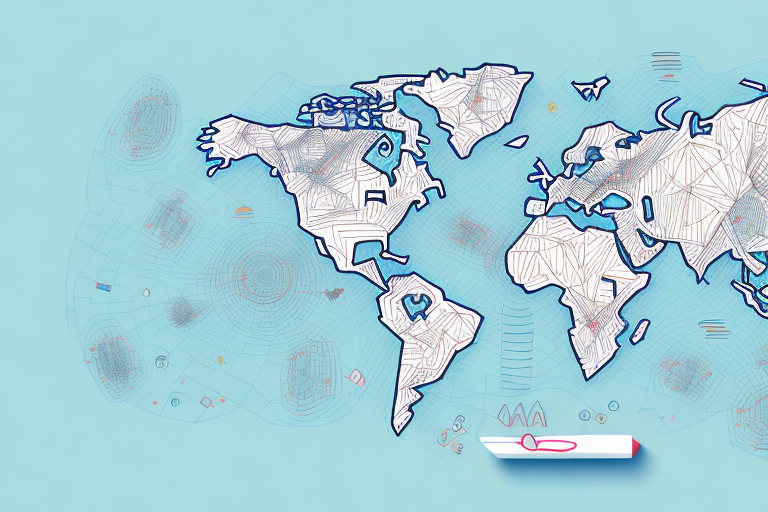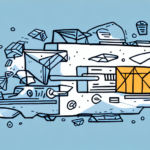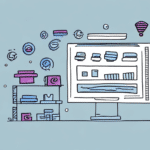Importance of Order Tracking and Delivery Notifications
In today’s fast-paced e-commerce environment, providing customers with reliable order tracking and timely delivery notifications is essential for maintaining high levels of satisfaction and trust. According to a 2023 Statista report, over 80% of consumers consider real-time order tracking a critical factor in their purchasing decisions.
Enhancing Customer Satisfaction
Order tracking allows customers to monitor the progress of their purchases from dispatch to delivery. This transparency reduces anxiety and enhances the overall shopping experience, leading to increased customer loyalty and repeat business.
Building Transparency and Trust
Providing real-time updates fosters transparency, which is crucial for building trust between businesses and their customers. When customers have access to accurate and timely information, they are more likely to view the business as reliable and accountable.
Reducing Package Theft and Errors
Delivery notifications help minimize the risk of package theft by informing customers of delivery schedules, allowing them to arrange for secure receipt of their orders. Additionally, accurate tracking reduces the likelihood of delivery errors, such as misplaced or lost packages.
Types of Order Tracking and Delivery Notifications
Implementing a variety of tracking and notification methods can cater to different customer preferences and enhance the overall experience.
Email Notifications
Email notifications are a staple for many businesses due to their cost-effectiveness and ease of implementation. Customers receive updates at key stages: order confirmation, shipment, and delivery. This method is ideal for customers who prefer to keep track of their orders through their inbox.
SMS/Text Message Notifications
For time-sensitive deliveries, such as perishable goods or medical supplies, SMS notifications provide immediate and direct updates. Studies show that SMS open rates are as high as 98%, ensuring customers receive critical information promptly.
Real-Time Tracking Pages
Dedicated tracking pages on your website offer customers a centralized location to monitor their orders. These pages often include maps, estimated delivery times, and detailed shipment statuses, providing a comprehensive overview of the delivery process.
Push Notifications
For businesses with mobile apps, push notifications offer instant updates directly to customers’ devices. This method leverages mobile technology to deliver timely information, enhancing engagement and convenience.
Setting Up Order Tracking on Your Website
Establishing an effective order tracking system involves selecting the right software and integrating it seamlessly with your e-commerce platform. Here’s how to get started:
Choosing the Right Software
Selecting reliable order tracking software is crucial. Opt for solutions that offer real-time updates, easy integration, and scalability. Popular options include AfterShip, ShipStation, and HelpScout Shipment Tracking.
Integrating with E-Commerce Platforms
Most order tracking software integrates smoothly with major e-commerce platforms like Shopify, WooCommerce, and Magento. Ensure that the chosen software supports your platform to facilitate seamless data synchronization and real-time updates.
Streamlining the Checkout Process
A streamlined checkout process minimizes errors and delays in order fulfillment. Implement features such as guest checkout options and multiple payment methods to accommodate diverse customer preferences and reduce friction during the purchase process.
Choosing and Integrating a Reliable Shipping Provider
The effectiveness of your order tracking and delivery notifications heavily depends on the reliability of your shipping provider.
Factors to Consider
- Delivery Speed: Choose a provider that offers a range of delivery speeds to meet different customer needs.
- Tracking Accuracy: Ensure the provider offers precise and real-time tracking information.
- Customer Reviews: Research customer feedback to gauge the provider’s reliability and service quality.
Integration Process
Integrating your shipping provider with your e-commerce platform typically involves setting up APIs or using pre-built plugins. Thoroughly test the integration to ensure that tracking information flows correctly and that notifications are sent promptly.
Customizing and Managing Delivery Notifications
Customization allows businesses to tailor notifications to align with their brand and meet customer expectations.
Branding Notifications
Incorporate your brand’s logo, colors, and messaging into delivery notifications to create a cohesive and professional appearance. This enhances brand recognition and provides a unified customer experience.
Personalization Options
Personalize notifications with customer-specific information such as order numbers, estimated delivery times, and personalized messages. Personalized communications can significantly improve customer engagement and satisfaction.
Handling Multiple Orders
For businesses processing multiple orders simultaneously, implementing a management system that automates notifications can streamline operations. Tools like Zoho CRM and HubSpot CRM can efficiently manage and automate notification workflows.
Troubleshooting and Measuring Success
Even with robust systems in place, issues may arise. Effective troubleshooting and performance measurement are essential for continuous improvement.
Common Issues and Solutions
- Tracking Inaccuracies: Double-check shipment details and ensure data is correctly entered into the tracking system.
- Delivery Delays: Communicate proactively with customers and your shipping provider to address and resolve delays promptly.
- Failed Notifications: Offer multiple notification channels (e.g., email and SMS) to ensure customers receive updates through their preferred method.
Key Metrics to Track
Monitoring the performance of your order tracking and delivery notification system involves tracking key metrics such as:
- Delivery Times: Measure the accuracy of estimated delivery times versus actual delivery times.
- Notification Open Rates: Analyze how frequently customers open and interact with notifications.
- Customer Satisfaction Scores: Collect feedback to assess customer satisfaction related to the order tracking experience.
Best Practices and Future Trends in Order Tracking and Delivery Notifications
Staying ahead of industry trends and implementing best practices can significantly enhance your order tracking and delivery notification systems.
Best Practices
- Provide Real-Time Updates: Ensure customers receive real-time information to keep them informed throughout the delivery process.
- Optimize Delivery Options: Offer various delivery options to cater to different customer needs, such as express or standard shipping.
- Use Multiple Notification Channels: Utilize email, SMS, and push notifications to reach customers through their preferred communication channels.
Future Technologies
The future of order tracking and delivery notifications is poised to embrace advanced technologies:
- Artificial Intelligence (AI): AI can predict delivery times more accurately by analyzing data from weather patterns, traffic conditions, and other variables. This leads to more reliable delivery estimates and improved customer satisfaction.
- Internet of Things (IoT): IoT devices can provide real-time tracking data, enhancing the precision and reliability of shipment tracking.
- Eco-Friendly Delivery Options: With increasing consumer demand for sustainable practices, future delivery systems may incorporate electric vehicles and eco-friendly packaging to reduce environmental impact.
Case Studies: Successful Businesses That Use Advanced Order Tracking and Delivery Notification Systems
Examining successful implementations can provide valuable insights:
Amazon
Amazon’s comprehensive order tracking system allows customers to monitor their packages in real-time, significantly enhancing user experience and trust. Their use of AI for predictive delivery times ensures high reliability and efficiency.
UPS
UPS utilizes advanced tracking technologies and integrates them seamlessly with their logistics network. Their commitment to transparency and reliability has made them a trusted name in the shipping industry.
FedEx
FedEx offers robust tracking systems that provide detailed updates and notifications. Their focus on customer service and technological integration has set industry standards for delivery notification systems.
Conclusion: Why You Should Invest in a Comprehensive Order Tracking and Delivery Notification System for Your Business
Investing in a comprehensive order tracking and delivery notification system is essential for modern businesses aiming to enhance customer satisfaction, build trust, and streamline operations. By providing real-time updates and personalized notifications, businesses can reduce delivery errors, minimize customer inquiries, and ultimately increase sales and revenue.
Stay ahead of the competition by adopting the latest technologies and best practices in order tracking and delivery notifications. This investment not only improves the customer experience but also contributes to the long-term success and reputation of your business.




















